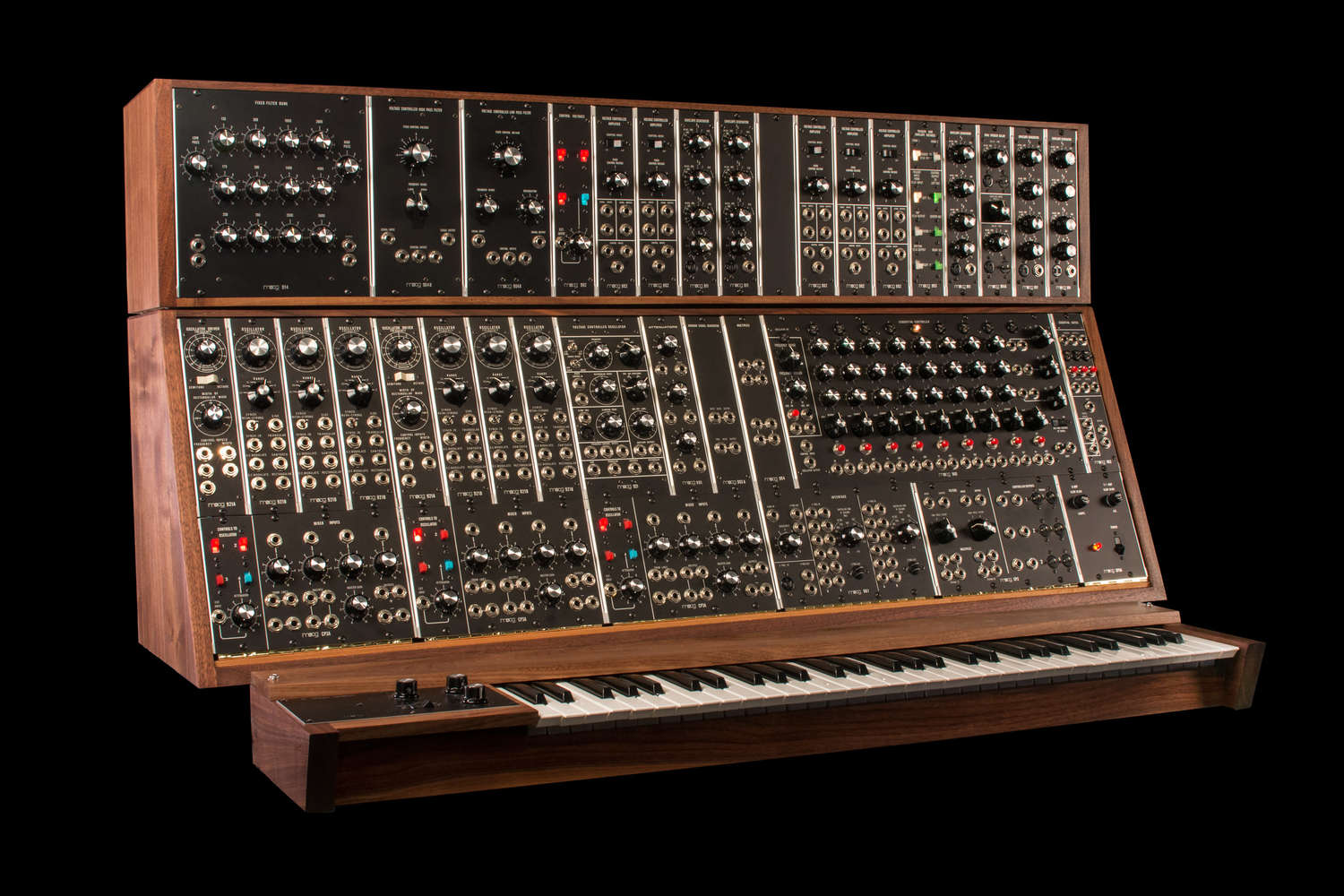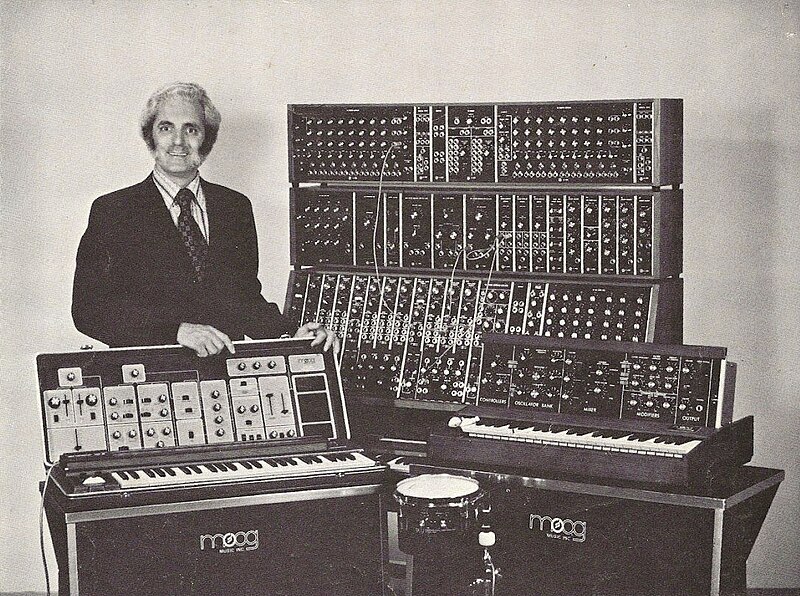
April 17th, 2024

The history of electronic music is intertwined with the legendary Moog synthesizer. Pioneered by Robert Moog in the 1960s, Moog's modular synthesizers revolutionized sound creation, offering unprecedented sonic possibilities for musicians and composers. Among these instruments, the Moog System 55 stands as a pinnacle of analog synthesis, a powerful and versatile machine coveted by musicians even today.
Before delving into the System 55, let's take a quick step back. Robert Moog, an engineer with a passion for electronic music, envisioned a more practical and user-friendly way to create electronic sounds. His answer is the modular synthesizer. These instruments consisted of individual electronic modules, each performing a specific sonic function (oscillators, filters, envelopes, etc.). Patch cables connected these modules, allowing users to create complex and unique soundscapes by routing signals through the system.
Moog's early modular synthesizers paved the way for the System 55. Released in 1973, it represented the culmination of Moog's modular design philosophy.
The Moog System 55 was a true marvel of electronic engineering. Housed in two beautiful walnut cabinets, it boasted a whopping 36 hand-made modules, offering a vast sonic palette.

These modules were the heart of the system. Encompassing voltage-controlled oscillators (VCOs) for sound generation, filters (VCFs) for shaping the sound, envelope generators (ADSRs) for controlling the amplitude envelope, voltage-controlled amplifiers (VCAs) for volume control, and a multitude of other modules like mixers, sequencers, and noise sources, the System 55 provided immense creative potential.



The modular design offered an unparalleled level of flexibility. Users could create an almost infinite variety of sounds by patching the modules in different configurations. This freedom allowed for the exploration of everything from classic analog leads and basses to otherworldly textures and experimental sounds. The System 55 wasn't just powerful, it was also an instrument that rewarded experimentation and fostered a deep understanding of sound synthesis.
Moog instruments have always commanded a premium price tag. There are several reasons for this:
One of the most fascinating aspects of the Moog System 55 is the world of patches. A patch refers to the specific configuration of connected modules that creates a particular sound. The System 55's vast modularity allowed for the creation of an endless array of patches. From the signature "Moog growl" to ethereal pads and pulsating sequences, the sonic possibilities were truly boundless.
Many famous musicians have utilized Moog System 55 patches in their work. Wendy Carlos' groundbreaking album "Switched-On Bach" prominently featured the System 55, showcasing its ability to recreate classical sounds with an electronic twist. Pioneering electronic music artists like Keith Emerson and Rick Wakeman also employed the System 55 to create their signature sounds.
The Moog System 55 is a monophonic synthesizer, meaning it can only play one note at a time. However, with clever patching techniques and the use of external sequencers, it's possible to create polyphonic-like textures and complex sequences.
While the original Moog System 55 is no longer in production (Moog did release a limited-edition reissue in 2014), its influence on electronic music remains undeniable. Its impact can be felt in countless genres, from progressive rock and electronic music to film scores and modern sound design.
Due to its rarity and legendary status, finding a Moog System 55 for sale can be challenging. Occasionally, they appear on the second-hand market, but expect a hefty price.
While the allure of a vintage Moog System 55 is undeniable, its rarity and price tag make it inaccessible to many musicians. Thankfully, the spirit of the System 55 lives on in the form of modern Moog System 55 clones. Companies like Behringer have released modular systems inspired by the System 55, offering a more affordable way to explore the world of Moog-style synthesis. Also, at Jake’s Custom Shop, we have modular cases modeled after the original Moog System 55 that are very affordable. These Moog System 55 Replica Cases pay homage to the looks of the original design, in the modern Eurorack format. When paired with the Behringer System 55 modules, you can experience the sound and beauty of the legendary system.

The question of "Is Moog a good brand?" is a resounding yes. Moog's impact on electronic music is undeniable. Their commitment to quality, from the meticulous hand-built construction of early instruments to the cutting-edge technology of their modern synthesizers, has earned them a reputation for excellence. Moog's legacy goes beyond just building instruments; they have fostered a spirit of exploration and experimentation within the electronic music community. The System 55 stands as a testament to this pioneering spirit, an instrument that continues to inspire musicians and sound designers even decades after its release.
Comments